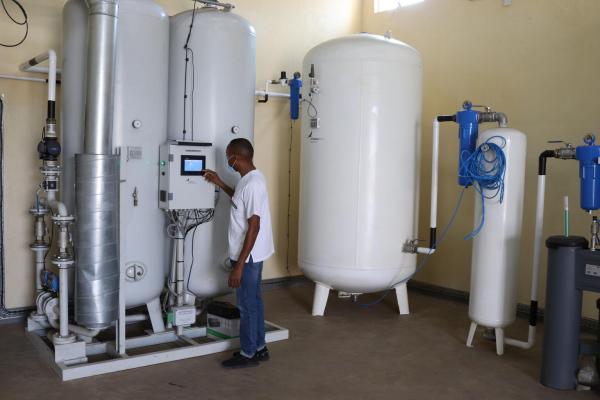
New Medical Oxygen Plant in Zimbabwe Completed
In a major milestone, a medical oxygen plant has been built in Mutare by a company under the Harare Institute of Technology to ensure Zimbabwe has adequate supplies, especially as demand has risen with the Covid-19 pandemic.
The plant, expected to be formally commissioned by President Mnangagwa, will ensure that there are enough supplies of medical oxygen, which is used for first aid resuscitation for emergencies, during anaesthesia, giving life support for patients who can’t breathe on their own, and oxygen therapy.
Athletes also use medical oxygen at high altitudes or training.
Mutare-based Verify Engineering, a technology development agency under the Ministry of Higher and Tertiary Education, Science and Technology Development, constructed the medical oxygen plant.
The company is mandated to create efficient technology-based companies to feed new ideas into the economy as well as take advantage of opportunities
It was established in 2005 and is now an integral part of the Harare Institute of Technology.
The Permanent Secretary in the Ministry of Higher and Tertiary Education, Science and Technology Development, Professor Fanuel Tagwira spoke of the new plant when he appeared before the Portfolio Committee on Higher and Tertiary Education yesterday.
“The plant is now ready and will be commissioned by His Excellency the President at a date to be advised,” he said.
Further details on the plant would be available when it is commissioned.
To ensure the medical oxygen reaches the hospitals and others who need it, the company had already imported 5 000 cylinders with a further 5 000 set to arrive in the country soon.
Prof Tagwira also told the Committee that the company was also working on other projects that include the establishment of a coal-to-fertiliser plant and coal-to-fuel plant in Lisulu, Hwange.
The company has designed a pilot plant capable of producing 5 000 litres of fuel a day, synthesized using an iron based-catalyst. It has commissioned an air separation unit and is now constructing an acetylene plant.
Oxy-acetylene welding is common when electricity is not available for arc-welding and is critical for a great deal of metalwork done in areas not on the national grid, while being useful in other areas.

